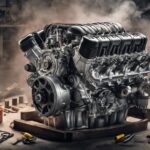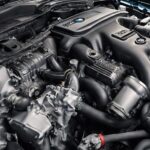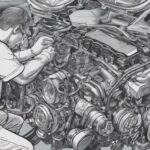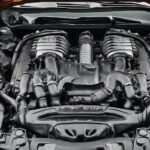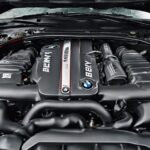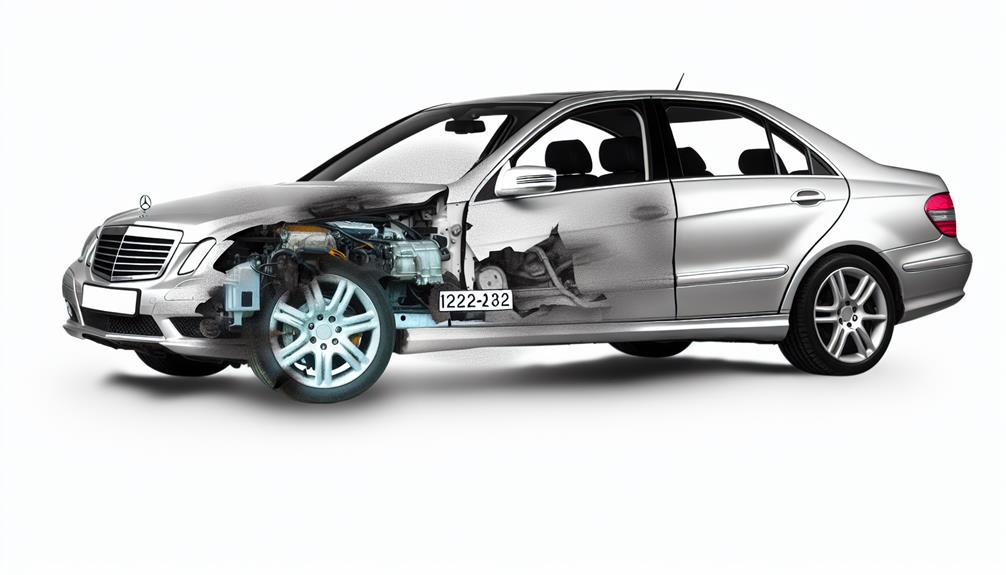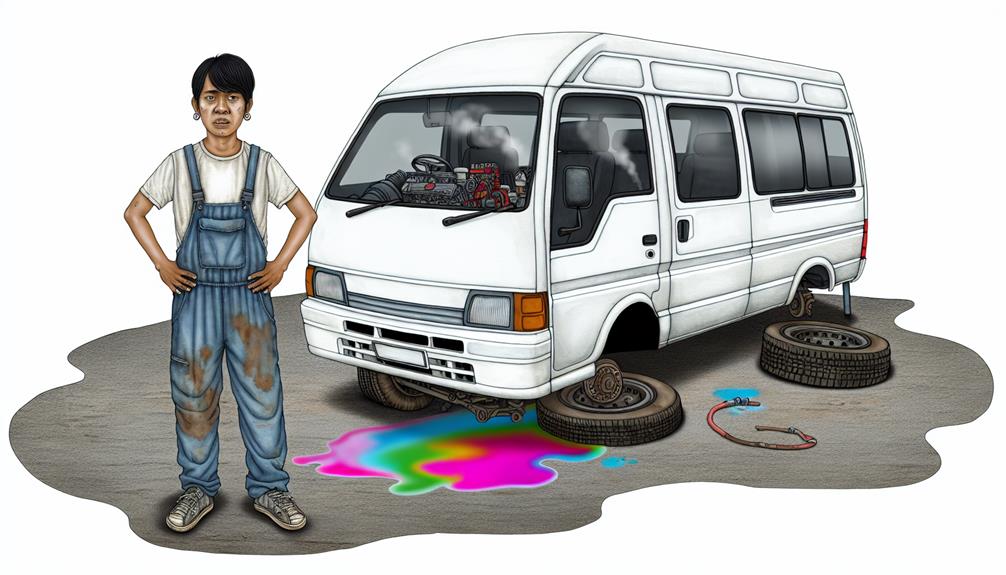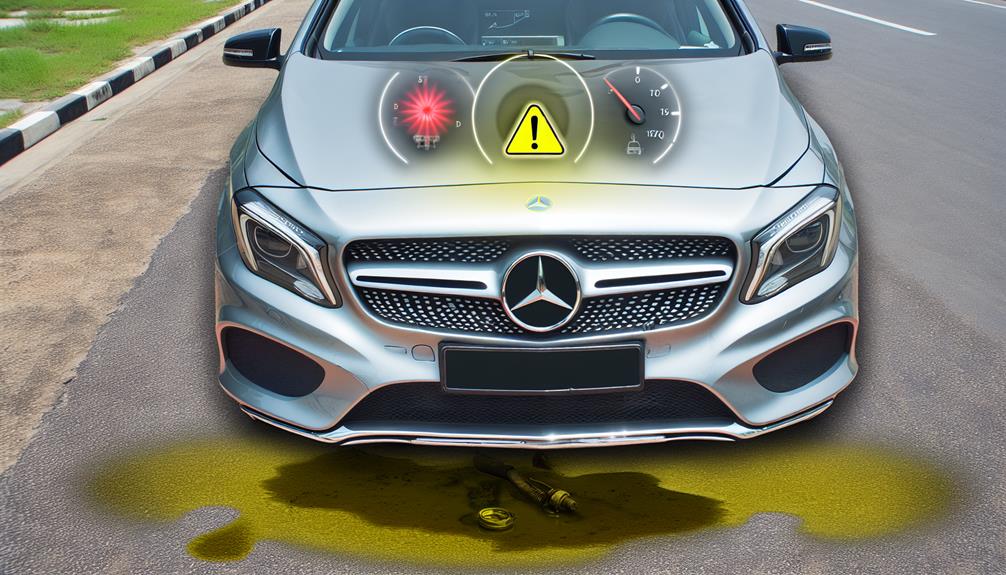When contemplating Mercedes E-Class cars, you should steer clear of early 2010-2011 models, particularly ones with the M272 engine. These models have been associated with possible costly repairs and safety concerns, affecting both your wallet and peace of mind. Be cautious to evade unexpected expenses and guarantee your vehicle's longevity.
Key Takeaways
- Early 2010-2011 E-Class models with the M272 engine.
- Fourth-gen E-Class models from 2010 onwards.
- 2010 model year with safety concerns.
- Potential costly repairs affecting 2010 models.
- Over 200 NHTSA complaints in 2010.
Problematic Mercedes E Class Years
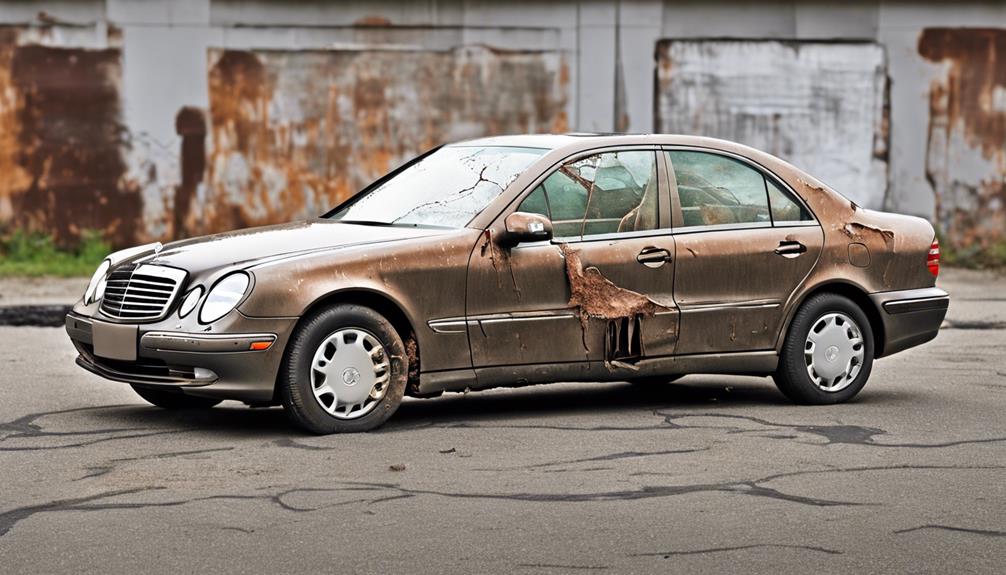
Which Mercedes E Class years pose the most problems for owners?
When it comes to the E-Class, certain model years have garnered a reputation for being more troublesome. Early 2010-2011 Mercedes E-Class models equipped with the M272 engine are often best avoided due to their known quirks and issues.
Additionally, fourth-gen E-Class models, particularly those from 2010 onwards, have been associated with a range of problems, including issues with the engine, suspension, electrical components, and airbags. Safety concerns are particularly prevalent in the 2010 model year, with over 200 NHTSA complaints, half of which involve frontal airbags and suspension issues.
These factors contribute to making these specific model years of the Mercedes E-Class more problematic for owners, requiring careful consideration before purchasing to avoid potential headaches and costly repairs down the line.
Common Issues With Mercedes E Class
Common issues frequently encountered with the Mercedes E Class include various mechanical failures and safety concerns that owners should be aware of. When owning a Mercedes E350 model, it's essential to watch out for the following problems:
- Balance Shaft Failure: The 2006 E350 model has a significant number of owner complaints related to balance shaft failures, which can lead to expensive repairs costing up to $4,850 after 85,800 miles.
- Fuel Leaking: Fuel leaking from the fuel tank gasket is a common issue in the E350, causing a strong gas odor after refueling. Repairs for this issue can cost around $1,200 and often occur before reaching the 100,000-mile mark.
- Safety Concerns: The E350 is prone to suspension problems and airbag failures, posing potential safety risks to drivers and passengers. Addressing these issues promptly is vital to guarantee the safety of all occupants in the Mercedes E Class.
Years Known for Expensive Repairs
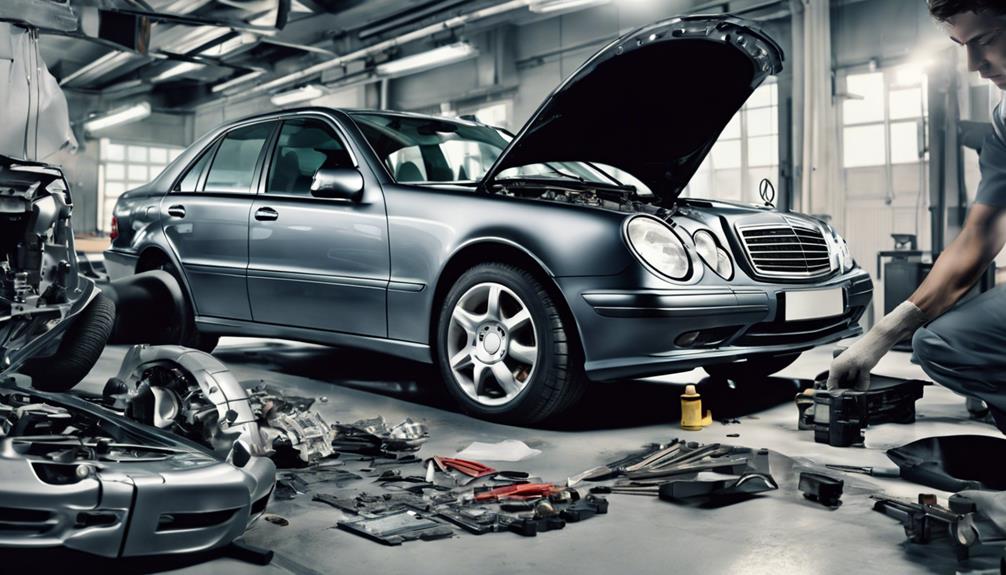
When considering the Mercedes E Class, certain years stand out for being associated with costly repairs that owners should be wary of. Specifically, the E350 Mercedes has been known for necessitating expensive repairs in various components.
The AC Compressor Replacement for the E350 Mercedes can set you back between $1,225 and $1,426. Head Gasket Replacement is another common costly repair, ranging from $1,513 to $1,825.
Park Assist Camera Replacement in the E350 Mercedes averages between $1,108 and $1,131. Additionally, Fuel Injector Replacement can range from $741 to $846, while Turbocharger Boost Sensor Replacement typically costs between $104 and $118.
These expenses can add up quickly, making it important to be aware of the potential financial burden associated with these repairs when considering certain years of the Mercedes E Class. It's advisable to factor in these possible costs when making your purchasing decision to avoid unexpected financial strains later on.
Mercedes E Class Transmission Problems
Transmissions in Mercedes E-Class vehicles are prone to experiencing issues like slipping, harsh shifting, and delayed engagement.
- Conductor Plate Failure: One common problem in Mercedes E-Class transmissions is conductor plate failure, which can lead to erratic shifting patterns and even transmission failure if not addressed promptly.
- Valve Body Issues: Another issue to watch out for is valve body problems. These can cause shifting delays, rough gear changes, and overall poor transmission performance.
- Fluid Leaks: Fluid leaks are also a concern with Mercedes E-Class transmissions. Leaks can lead to low fluid levels, resulting in overheating and potential damage to the transmission components.
Being aware of these common transmission issues in Mercedes E-Class vehicles can help you address them early on and avoid costly repairs down the road. Regular maintenance, fluid checks, and prompt attention to any warning signs can go a long way in keeping your E-Class transmission running smoothly.
Electrical Issues in Mercedes E Class
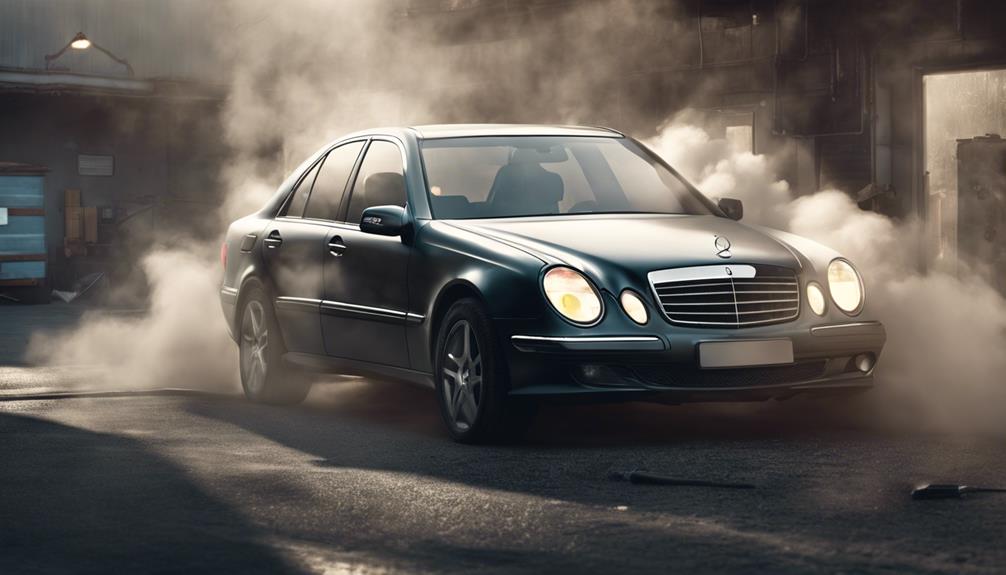
You may encounter common electrical problems in your Mercedes E-Class, such as issues with the infotainment system, dashboard displays, and electronic modules.
These malfunctions can disrupt vital systems like lighting, climate control, and power windows, impacting the overall reliability of your vehicle.
Addressing these issues often necessitates specialized diagnostic tools and expertise due to the intricate nature of the E-Class's electrical systems.
Common Electrical Problems
Experiencing typical electrical issues in Mercedes E-Class vehicles can often lead to frustrating issues with various systems like central locking, windows, and lighting. When dealing with these electrical issues, you may encounter:
- Malfunctions in the COMAND system, affecting navigation and audio functions.
- Battery drain problems leading to frequent replacements due to electrical faults.
- Faulty sensors causing issues with ABS or parking assist systems.
These common problems can disrupt the smooth operation of your Mercedes E-Class, impacting the overall driving experience. Stay informed about these issues to address them promptly and maintain the peak performance of your vehicle.
Diagnostic Troubleshooting Tips
When troubleshooting electrical issues in your Mercedes E Class, a systematic approach to checking key components like fuses, relays, and wiring connections is crucial for accurate diagnosis and effective resolution. Here is a helpful table outlining diagnostic troubleshooting tips for addressing electrical problems in your Mercedes E-Class:
| Diagnostic Step | Description |
|---|---|
| Check Fuses | Inspect the fuses for any signs of damage or burnout. |
| Test Relays | Verify the relays to make sure they are functioning correctly. |
| Examine Wiring Connections | Look for loose or corroded wiring connections that may be causing issues. |
| Use Diagnostic Tools | Utilize OBD scanners to identify specific error codes related to malfunctions. |
Repair Cost Estimates
Repairing electrical issues in a Mercedes E Class can result in significant expenses, as indicated by the average annual maintenance cost of $788. When facing electrical problems in your E-Class, be prepared for potential repair costs such as:
- AC compressor replacement ranging from $1,225 to $1,426
- Head gasket replacement costing between $1,513 to $1,825
- Park assist camera replacement priced at $1,108 to $1,131
These estimates demonstrate the financial implications of addressing electrical issues in your Mercedes E-Class.
Additionally, Turbocharger boost sensor replacement, averaging $104 to $118, is another aspect to take into account when budgeting for potential repairs.
Be proactive in addressing these concerns to avoid unexpected financial burdens down the road.
Engine Malfunctions to Watch Out For
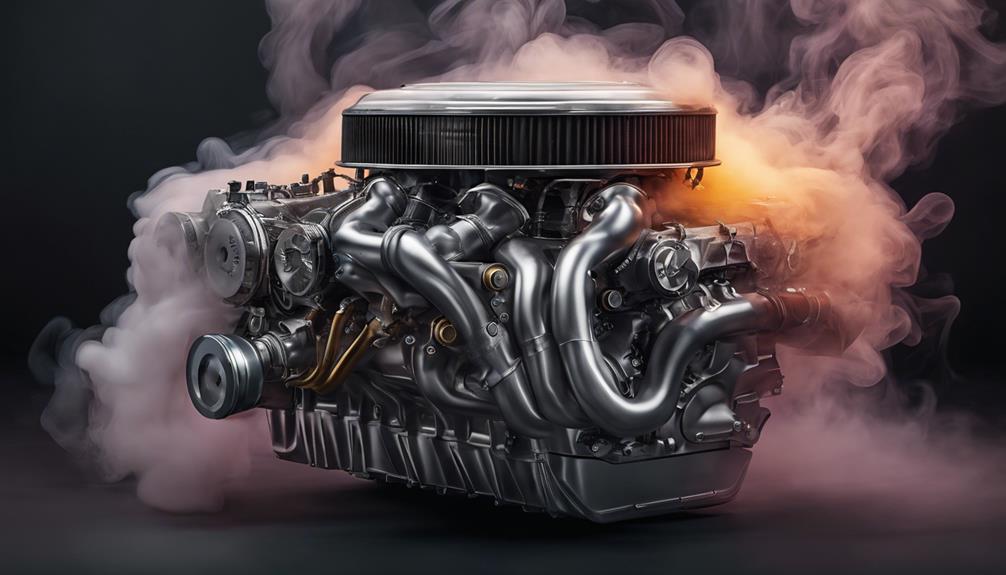
Watch out for common engine malfunctions in the Mercedes-Benz E Class, such as balance shaft failures in 2006 E350 models and timing chain issues in early 2010-2011 vehicles.
Keep an eye out for warning signs like unusual engine noises or oil leaks, which could indicate potential problems that may lead to costly repairs.
Regular maintenance and early detection of engine issues can help you avoid unexpected repair costs and guarantee the longevity of your Mercedes E Class.
Common Engine Issues
Potential engine malfunctions in certain Mercedes E Class models can lead to costly repairs and inconvenience for owners. When dealing with the Mercedes E350, watch out for:
- Balance shaft failures in the 2006 model, often resulting in expensive repairs.
- Quirks and potential malfunctions in early 2010-2011 models with the M272 engine.
- Engine issues in the 2014 E350, including bass amplifier problems and burning smells from the speaker system.
These problems can be exacerbated by issues with the turbo actuator, timing chain, and oil leaks. Owners have faced significant costs related to engine repairs and replacements in specific model years of the Mercedes E350.
Stay vigilant to avoid unexpected expenses and maintain your vehicle's performance.
Warning Signs to Check
If you observe a strong gas odor lingering post-filling in your Mercedes E350, it could indicate a potential issue with the fuel system that demands immediate attention. Apart from this, be vigilant for warning signs of balance shaft failure in 2006 E350 models. Check for fuel leaking from the fuel tank gasket, especially if your vehicle has mileage below 100,000 miles.
Remember to watch out for engine issues, gas tank problems, and airbag failures. Additionally, keep an eye out for potential suspension issues. Considering these signs and symptoms promptly can help prevent costly repairs down the road. Stay proactive in addressing these warning signals to guarantee the longevity and smooth performance of your Mercedes E350.
Repair Costs Analysis
When facing engine malfunctions in your Mercedes E-Class, be ready for potential repair costs that can greatly impact your budget. Here are some common repair costs associated with engine malfunctions:
- AC compressor replacement can range from $1,225 to $1,426.
- Head gasket replacement typically costs between $1,513 and $1,825.
- Park assist camera replacement may set you back around $1,108 to $1,131.
These expenses, coupled with other repairs like fuel injector replacement costing $741 – $846, can substantially contribute to the overall maintenance cost of your Mercedes E-Class. It's crucial to factor in these potential costs when considering owning this vehicle to make sure you're financially prepared for any engine-related issues.
Avoid Costly Repairs With Smart Choices
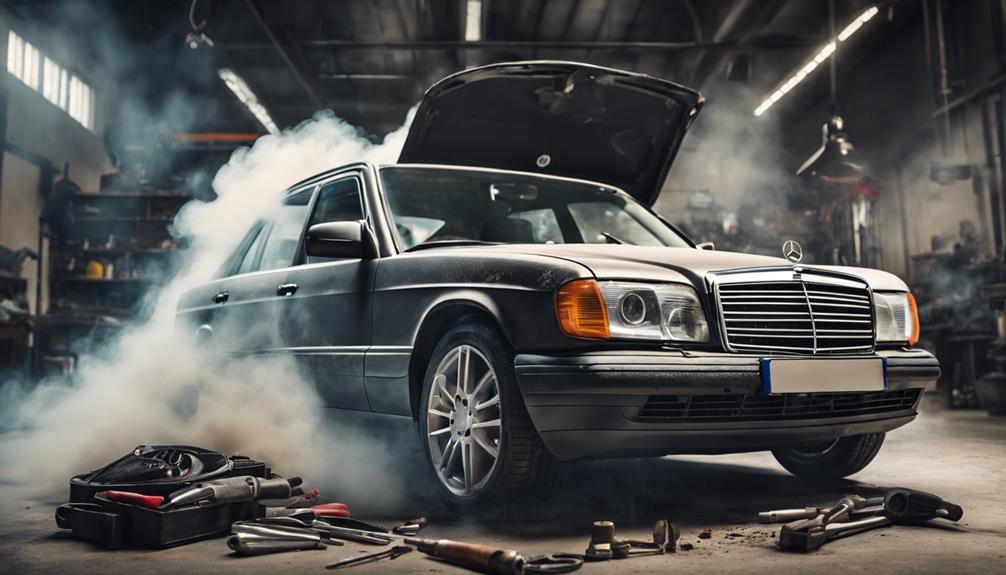
To steer clear of expensive repairs, opt for 2012 and newer Mercedes E-Class models with improved engineering and technology. Early 2010-2011 models, especially those with the M272 engine, have been associated with quirks and potential issues that could lead to costly maintenance down the road.
Choosing 2012-2016 E-Class models equipped with direct injection engines can offer better reliability and performance, reducing the likelihood of unexpected repair expenses. Additionally, considering the 2014+ E-Class models may provide updated features and potential cost savings on repairs, making it a smart choice for those looking to evade high maintenance costs.
Frequently Asked Questions
What Year E-Class Is Most Reliable?
For the most reliable E-Class, opt for the 2015 model known for its dependability and advanced features. It offers a blend of reliability and modern technology, ensuring a satisfying driving experience. Consider this year for peace of mind.
Which Year Mercedes Is the Most Reliable?
For the most reliable Mercedes, consider the 2012-2016 E350 models with direct injection engines. They boast top safety ratings, low recalls, and high performance. Your best bet is the 2012 model, rated 5/5 by J.D. Power.
Which Mercedes E-Class Engine Is Best?
For the best Mercedes E-Class engine, choose the M276 over the M272. It delivers superior performance and reliability with more horsepower. Opting for the M276 can enhance your driving experience and minimize potential engine issues in the future.
How Many Miles Will an E-Class Mercedes Last?
An E-Class Mercedes can last well beyond 200,000 miles with proper care. Regular maintenance, including oil changes and timely repairs, is key. Factors like driving habits and road conditions impact longevity. With attention, your E-Class can offer reliable performance.
Conclusion
When considering purchasing a Mercedes E Class, it's important to be aware of the problematic years to avoid. Common issues such as transmission problems, electrical issues, and engine malfunctions can lead to costly repairs.
By making smart choices and avoiding these problematic years, you can save yourself from potential headaches and expenses down the road. Stay informed and make a well-informed decision when choosing a Mercedes E Class model.
